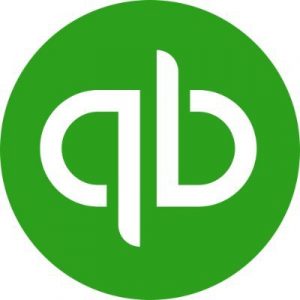
The process and form for calculating the cost of goods sold and including it on your business tax return are different for different types of businesses. It is not needed for the perpetual inventory method, where the cost of individual units that are sold are recognized in the cost of goods sold. In a perpetual inventory system the cost of goods sold is continually compiled over time as goods are sold to customers. This approach involves the recordation of a large number of separate transactions, such as for sales, scrap, obsolescence, and so forth. If cycle counting is used to maintain high levels of record accuracy, this approach tends to yield a higher degree of accuracy than a cost of goods sold calculation under the periodic inventory system.
This is a prime reason why rigorous inventory management practices and accurate inventory tracking are essential in ensuring a company’s financial health. When inventory is artificially inflated, COGS will be under-reported which, in turn, will lead to a higher-than-actual gross profit margin, and hence, an inflated net income. A retail operation has no cost of goods manufactured, since it only sells goods produced by others. Thus, its cost of goods sold is comprised of merchandise that it is reselling. Such an analysis would help Benedict Company in determining the products that earn more profit margins and the products that are turning out too costly for the company to manufacture. Thus, from the above example, it can be observed that the cost of the merchandise that Benedict Company Manufacturers has to sell cost him $530,000 leaving the closing inventory of $20,000.
All of the above can become exponentially more complicated when volumes and product lines increase. For companies with many SKUs, the best approach to calculating COGS will be a robust accounting system that’s tied to inventory management. And regardless of which inventory-valuation method a company uses—FIFO, LIFO or average cost—much detail is involved. So far, this discussion of COGS has focused on GAAP requirements, but COGS also plays a role in tax accounting.
How Is COGS Different From Cost of Revenue and Operating Expenses
It does not include any general, selling, or administrative costs of running a business. In accounting, the Cost of Goods Sold is an expense appearing in the income statement. It is used to determine a company’s gross profit by subtracting its value from total revenue. It is also needed for calculating a company’s gross margin – the funds available to pay for fixed expenses and income tax, which in turn is required to determine a healthy markup. As the primary cost of doing business, COGS also informs net income.
It helps management and investors monitor the performance of the business. Many of these software providers are tailor-made for the complex requirements of modern SME manufacturers, combining affordability with cutting-edge functionality. For example, with MRPeasy, accuracy in cost accounting is assured thanks to enhanced inventory and production tracking tools, and procurement management functionalities. A standard accounting module helps keep tabs on the books while seamless integrations with respected financials software like QuickBooks and Xero make sure all finances are always under control. Examples of pure service companies include accounting firms, law offices, real estate appraisers, business consultants, professional dancers, etc. Even though all of these industries have business expenses and normally spend money to provide their services, they do not list COGS.
The many cost-oriented KPIs in manufacturing accounting constitute some of the most important financial metrics for manufacturers and distributors. In this post, we look at the function and relevance what are payroll taxes of one such KPI – the Cost of Goods Sold. Learn more about how businesses use the cost of goods sold in financial reporting, and how to calculate it if you need to for your own business.
UK to keep EU safety mark in post-Brexit climbdown – BBC
UK to keep EU safety mark in post-Brexit climbdown.
Posted: Tue, 01 Aug 2023 16:47:20 GMT [source]
Companies that don’t make a product—for example, retailers and wholesalers—use the term cost of sales instead to refer to direct costs. Some businesses report both COGS and cost of sales separately if they make products and are involved in retailing or wholesaling. Interestingly, employee payroll can be classified as either type of expense, depending on the specific type of labor involved. Office payroll for secretaries, accountants, marketing specialists, and custodial staff would be classified as operating expenses.
The cost of goods sold can be fraudulently altered in order to change reported profit levels, such as by altering the bill of materials and/or labor routing records in a standard costing system. Cost of Goods Sold (COGS) measures the “direct cost” incurred in the production of any goods or services. It includes material cost, direct labor cost, and direct factory overheads, and is directly proportional to revenue.
Choosing an Accounting Method for COGS
This means that the inventory value recorded under current assets is the ending inventory. If you are selling a physical product, inventory is what you sell. Your business inventory might be items you have purchased from a wholesaler or that you have made yourself.
- It assumes that the ending inventory on hand are the oldest units produced, and that the newest units produced have already been sold.
- Most companies do periodic physical counts of inventory to true up inventory quantity on hand at the end of a period.
- If you are a small business with annual gross receipts of $26 million or less for the past three years, you may be able to choose not to keep an inventory and not use the accrual method for accounting.
- For example, COGS for an automaker would include the material costs for the parts that go into making the car plus the labor costs used to put the car together.
- Thus, the calculation tends to assign too many expenses to goods that were sold, and which were actually costs that relate more to the current period.
If the inventory value included in COGS is relatively high, then this will place downward pressure on the company’s gross profit. For this reason, companies sometimes choose accounting methods that will produce a lower COGS figure, in an attempt to boost their reported profitability. This tax calculation of COGS includes both direct costs and parts of the indirect costs for certain production or resale activities as defined by the uniform capitalization rules.
Cost of Goods Sold and Tax Returns
We’re here to show you there is a quick and easy solution designed for modern manufacturers. Mattias is a content specialist with years of experience writing editorials, opinion pieces, and essays on a variety of topics. He is especially interested in environmental themes and his writing is often motivated by a passion to help entrepreneurs/manufacturers reduce waste and increase operational efficiencies. He has a highly informative writing style that does not sacrifice readability. Working closely with manufacturers on case studies and peering deeply into a plethora of manufacturing topics, Mattias always makes sure his writing is insightful and well-informed.
Alternative systems may be used in some countries, such as last-in-first-out (LIFO), gross profit method, retail method, or a combinations of these. Such calculation of COGS would help Benedict Company to plan purchases for the next financial year. In addition to this, the company can also determine the cost for each of its product categories and compare such costs with sales in order to determine the selling margin. Of course, it’s possible to calculate cost of goods sold without including direct labor costs.
Compute the additional production costs
Consequently, their values are recorded as different line items on a company’s income statement. But both of these expenses are subtracted from the company’s total sales or revenue figures. Costs of materials include direct raw materials, as well as supplies and indirect materials. It requires a company to keep complete and accurate records for the GAAP calculations reported on financial statements and, separately, to support a tax return. A company’s inventory management, from both the physical and valuation perspectives, must be precise. With the exception of Specific Identification, all of the abovementioned methods provide cost estimations for sold inventory.
In theory, COGS should include the cost of all inventory that was sold during the accounting period. In practice, however, companies often don’t know exactly which units of inventory were sold. Instead, they rely on accounting methods such as the first in, first out (FIFO) and last in, first out (LIFO) rules to estimate what value of inventory was actually sold in the period.
Specific identification is special in that this is only used by organizations with specifically identifiable inventory. Costs can be directly attributed and are specifically assigned to the specific unit sold. This type of COGS accounting may apply to car manufacturers, real estate developers, and others.

If your business sells products, you need to know how to calculate the cost of goods sold. This calculation includes all the costs involved in selling products. Calculating the cost of goods sold (COGS) for products you manufacture or sell can be complicated, depending on the number of products and the complexity of the manufacturing process.
Doing so gives you a more fine-grained view of what causes this expense, and also makes it easier to identify cost control measures. However, only do so if the reduction will not impact the customer experience; after all, reducing costs that also lead to a decline in sales will worsen profits. Under the first in, first out method (FIFO), the cost of the first unit to enter inventory is charged to expense first. In an inflationary environment, the least expensive (oldest) inventory items are charged to expense first, which tends to inflate the reported profit level.
Cost of goods sold does not appear on the cost of goods manufactured statement but on the income statement. Cost of goods sold (COGS) is calculated by adding up the various direct costs required to generate a company’s revenues. Importantly, COGS is based only on the costs that are directly utilized in producing that revenue, such as the company’s inventory or labor costs that can be attributed to specific sales. By contrast, fixed costs such as managerial salaries, rent, and utilities are not included in COGS.
- Inventory purchases incorporate all crude material bought by the company, both money and credit exchanges.
- Filers of Form 1120, 1120-C, 1120-F, 1120S, 1065, or 1065-B complete and attach this form if they report a deduction for cost of goods sold.
- LIFO is where the latest goods added to the inventory are sold first.
- In the first two weeks, you sell 25 candles at the standard selling price of $8.
- LIFO inventory valuation is a reverse-production-order approach.
Cost of goods sold (COGS) is the carrying value of goods sold during a particular period. QuickBooks bill of materials gets tricky with the online version. Here we investigate how it all works and how 3rd party tools can bridge the feature gaps. Try Katana for free and spend less of your business’ time being bogged down by COGS.